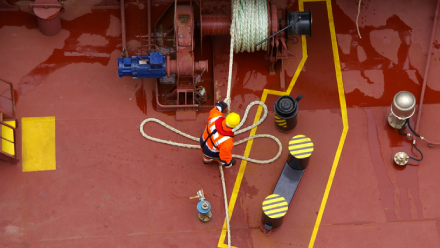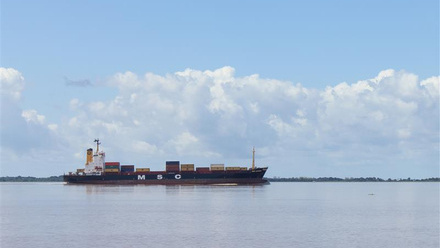1888 paddle steamer, Lucy Ashton, brought back to life
The first research vessel equipped with jet engines is still making waves in computer modelling.
The paddle steamer Lucy Ashton entered service on the River Clyde in Scotland in 1888 and around 1949 it became the first research vessel equipped with jet engines. The 19th century vessel’s usefulness, however, has continued long after she was scrapped in the 1950s in the 21stCentury field of computational fluid dynamics (CFD) and resistance predictions.
When determining fluid dynamics and resistance in full scale ships it is necessary to discount a variety of circumstances, such as the effect of any tug towing the vessel on the wave pattern of the subject vessel. At sea this is an extremely hard thing to achieve, but one which Dr Dmitriy Ponkratov, a founder of the Joint Research project (JoRes JPR) and currently a Marine Director at Siemens Digital Industries Software, found a solution to while boarding a plane in 2020, after downloading some old journals about Lucy Ashton.
Ship resistance prediction at full scale traditionally relies on the International Towing Tank Conference (ITTC) recommended procedure, which has its roots in towing tank model scale tests. Despite being today’s best practice and widely utilised procedure, it is based on old assumptions that may introduce uncertainties to full-scale resistance prediction.
But with computerisation, the development of digital twins can be applied. Arash Eslamdoost, Associate Professor in Applied Hydrodynamics at Chalmers University of Technology, says, “Recent advancements in CFD, as part of digital transformation, offer an exciting alternative to revisit the ITTC procedure.
“CFD enables direct resistance prediction at full scale, avoiding the uncertainties involved in extrapolating the model scale resistance to full scale. This approach not only can significantly improve the accuracy and reliability of ship resistance predictions but also can provide more information about the flow details around a full-scale ship. However, before CFD can be fully adopted for full-scale resistance predictions, it must be validated through comparison with full-scale resistance measurements, which are rare.”
Using the past to push discovery forward
The most straightforward way to find the necessary data is to tow a vessel behind another and assess its resistance profile, but the tug’s passage through the water spoils the wave pattern of the subject vessel. “For many years, I thought it is an unsolvable puzzle, and we need more time to come up with a practical solution to that,” states Dr Ponkratov. “I was astonished when we realised that the solution actually lies in the past, not the future!”
Dmitriy spoke to colleagues about his idea to use data from the Lucy Ashton including Professor Rickard Bensow of Chalmers University of Technology in Gothenburg, Sweden: “When Dmitriy told me he had found this case, it was clear it formed a unique opportunity to validate full-scale resistance predictions made by CFD.”
Back in 1950 engineers at the British Ship Research Association BSRA installed four Rolls-Royce Derwent jet engines on the Lucy Ashton in specially constructed mounts over the sides of the ship where the original paddle wheels previously had been positioned. Thus, it became the first and only research vessel ever equipped with jet engines which was used for resistance experiments to investigate the effects of drag and friction on a full-size hull.
Over time the research and its data were forgotten until 2020 when Dr Ponkratov used it to develop a new validation test case for full-scale CFD. In 2024, the Chalmers University of Technology launched a global workshop to calculate various CFD codes by comparing the results with actual measurements performed in 1950 on the Lucy Ashton and once again the paddle steamer found relevance.
Image: Lucy Ashton on the water; credit: Scottish Maritime Museum.






